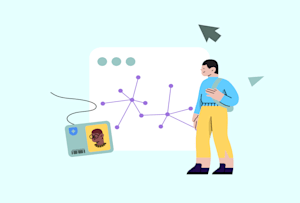7 Powerful Facts About Zero Discrimination Day That Can Change Lives
Zero Discrimination Day is an annual observance celebrated on March 1, highlighting the need for inclusion, equality, and fairness. It’s a day that reminds us of the importance of eliminating all forms of discrimination and promoting diversity in every aspect of life. With its powerful message and global relevance, this day serves as a catalyst for change, inspiring individuals and communities to create a more inclusive world.
Understanding Zero Discrimination Day
Zero Discrimination Day was first celebrated on March 1, 2014, initiated by the United Nations (UN) and supported by UNAIDS. The day encourages people to break down barriers of discrimination based on race, gender, age, disability, sexual orientation, or social status. The butterfly, a symbol of transformation and change, represents the spirit of the day.
The theme for each year emphasizes specific issues like gender inequality, LGBTQ+ rights, or access to healthcare, driving attention to global disparities and advocating for systemic changes.
Why Zero Discrimination Day Matters
- Promotes Equality: Discrimination creates divisions and deprives people of opportunities. This day emphasizes that everyone deserves to be treated with respect and fairness.
- Inspires Advocacy: It motivates individuals, organizations, and governments to tackle prejudice in their communities.
- Builds Social Harmony: By addressing bias and stereotypes, the day fosters unity and mutual understanding.
Daily Life Impacts of Discrimination
Discrimination isn’t just a theoretical concept; it has real-life implications:
- Mental Health Challenges: Victims of prejudice often experience stress, anxiety, and depression.
- Economic Inequality: Discrimination in workplaces or schools creates long-term financial and social disadvantages.
- Limited Access to Services: Marginalized groups often face barriers in accessing healthcare, education, and legal resources.
- Social Division: Prejudice damages trust and cooperation within communities.
By addressing these impacts, Zero Discrimination Day contributes to building a fairer society for everyone.
How is Zero Discrimination Day Observed?
Countries and communities mark this day in various ways:
- Educational Campaigns: Schools and organizations host workshops, talks, and activities to promote understanding.
- Artistic Expressions: Theater, music, and art exhibitions depict stories of inclusion and diversity.
- Social Media Movements: Hashtags like #ZeroDiscriminationDay spread awareness across platforms, encouraging global participation.
- Community Projects: Local initiatives aim to uplift marginalized groups by providing support and resources.
7 Important Facts About Zero Discrimination Day
- Established in 2014: It was first observed by the UN to combat all forms of prejudice.
- Global Reach: It’s celebrated worldwide, uniting diverse cultures and perspectives.
- Butterfly Symbolism: Represents change, hope, and the beauty of diversity.
- Focus on Human Rights: Aligns with global efforts to uphold dignity and equality for all.
- Inclusive Themes: Each year, the themes address pressing global inequalities.
- Role of UNAIDS: The organization highlights discrimination in healthcare, especially concerning HIV/AIDS.
- A Platform for Advocacy: The day empowers marginalized voices to demand their rights.
FAQs About Zero Discrimination Day
Q1: What is the purpose of Zero Discrimination Day?
A: To eliminate discrimination in all its forms and promote inclusivity and fairness.
Q2: Who can participate in this observance?
A: Everyone—individuals, communities, organizations, and governments—can contribute by raising awareness and taking action.
Q3: How can I support this cause?
A: You can speak out against discrimination, educate others, and participate in local initiatives promoting equality.
Significance of Zero Discrimination Day
Discrimination erodes human dignity and stifles progress. This day underscores the need for systemic changes, fostering a culture of respect and equality. It resonates deeply with global initiatives like the Sustainable Development Goals (SDGs), particularly goals focused on reducing inequality and ensuring justice for all.
A society free from discrimination:
- Nurtures Potential: When everyone is given equal opportunities, their unique skills can thrive.
- Strengthens Economies: Inclusive policies drive innovation and productivity.
- Promotes Peace: Respect for diversity reduces conflict and promotes harmony.
Wishing and Spreading Positivity
Share these heartfelt messages to inspire change:
- “Equality isn’t just a right; it’s a necessity. Let’s work together to end discrimination!”
- “On Zero Discrimination Day, let’s celebrate diversity and ensure everyone feels valued and respected.”
- “Together, we can build a future where no one is left behind. Happy Zero Discrimination Day!”
Conclusion
Zero Discrimination Day is more than an annual observance—it’s a call to action. It reminds us of the power of inclusion, the strength in diversity, and the importance of treating everyone with fairness and respect. By embracing these values, we create a better, more just world for future generations.










